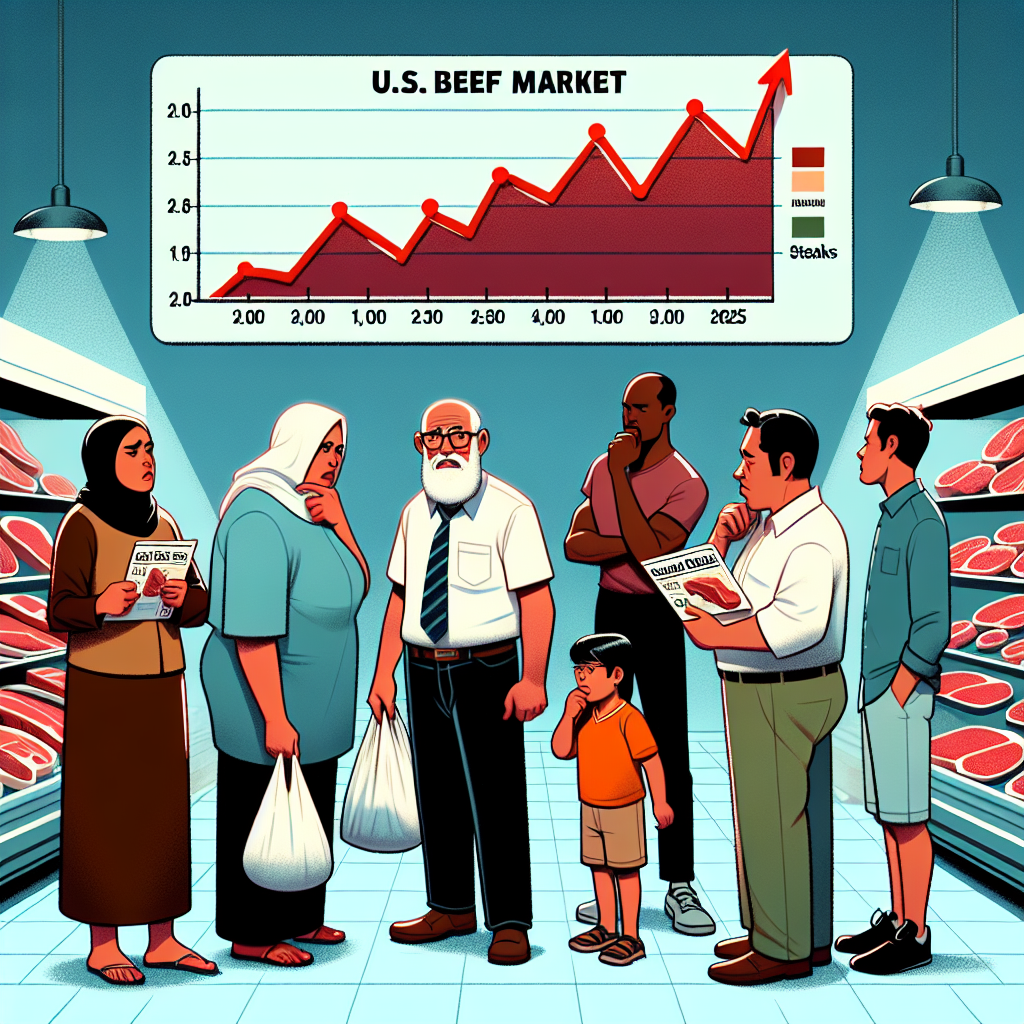The U.S. beef market is currently experiencing the most severe supply-demand imbalance in decades, leading to historically high beef prices from late summer to early fall of 2025. This price surge not only set record prices for ground beef and steaks but also put American consumers in a predicament of facing the “most expensive burger ever.” However, the record-high beef prices brought “joy” to ranchers.
The Consumer Price Index (CPI) report by the U.S. Bureau of Labor Statistics in August showed a sharp increase in beef prices over the past year. In August, ground beef prices rose by 12.8% year-on-year, roast beef prices by 13.6%, and steak prices by 16.6%. These inflation figures far exceeded the 3.2% year-on-year increase in all food categories and the 5.4% increase in meat prices.
There are three main reasons for this price surge:
Historic Drought:
Ranchers have stated that persistent drought over the past few years has severely affected the grass and feed supply in major livestock regions such as Texas, Oklahoma, and Kansas. This has forced ranchers to carry out large-scale “liquidation” (selling of cows), leading to the lowest U.S. cattle inventory levels since around 1951.
Tariff Barriers:
The Trump administration’s high tariffs on imported beef, especially imposing a total tax burden of up to 76% on beef from Brazil (a significant source of ground beef for the U.S.), severed important low-cost import channels, further driving up domestic beef prices.
Disease and Import Restrictions:
The U.S. Department of Agriculture (USDA) suspended the importation of live cattle from Mexico for a period due to the discovery of diseases like New World screwworm on the U.S.-Mexico border, further shrinking the supply.
However, while consumers and restaurants are facing high cost pressures, ranchers are experiencing potentially the best profitability period in decades or even in history.
According to reports by media outlets like The Wall Street Journal, some industry insiders estimate that under extremely tight supply and skyrocketing prices, ranchers are currently making over $700 in profit per head of cattle, setting a new historical high far above single-digit profits five years ago (e.g., around $2).
Colin Woodall, CEO of the National Cattlemen’s Beef Association, stated that the higher prices are “a welcome change” and help offset the inflation and economic challenges brought by the Biden administration’s governance.
Illinois rancher Mike Martz confirmed that while their crop business suffered losses due to tariffs causing price declines, their cattle business is profitable, which combined helps sustain farm operations.
While the beef industry unexpectedly benefits from import restrictions due to tariffs, the grain industry suffers from retaliatory export restrictions.
Experts point out that due to the long growth cycle of cattle, even if ranchers start rebuilding their herds now, it will take two to three years to significantly impact the market supply. Therefore, it is expected that U.S. beef prices will remain high in the short term, requiring consumers to seek alternatives or wait until 2027 or 2028 to potentially see a significant increase in supply.

